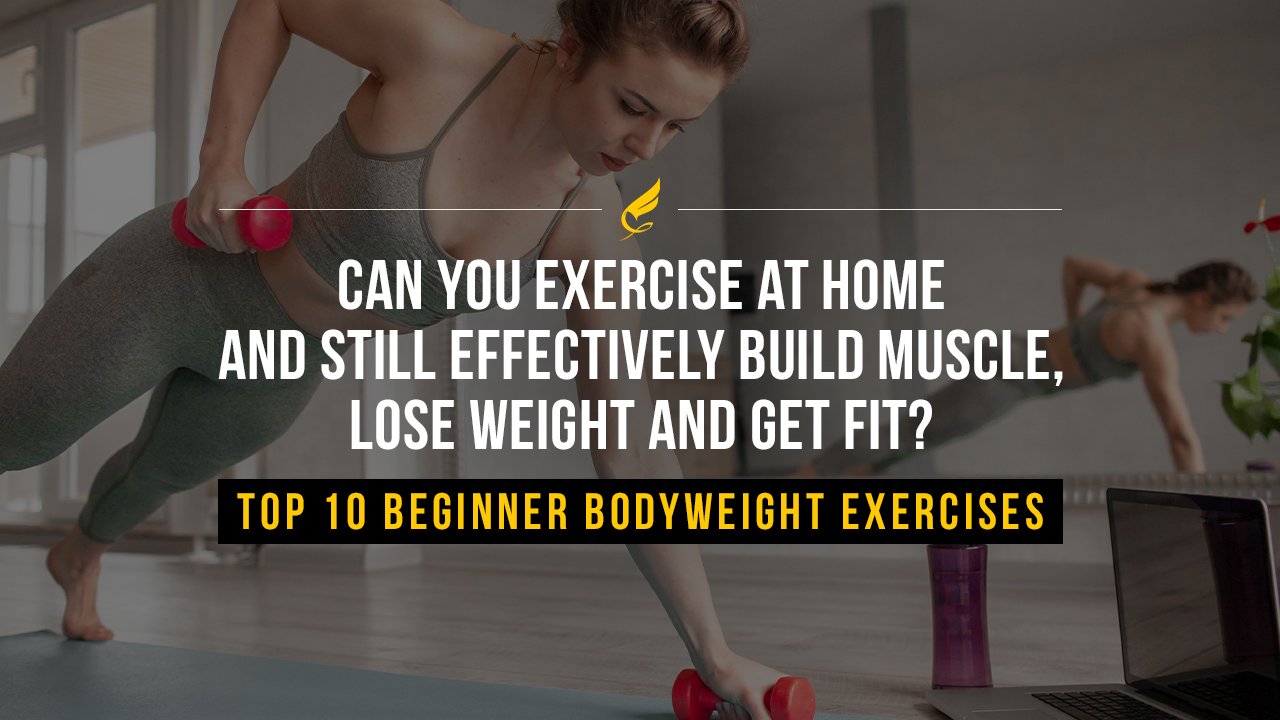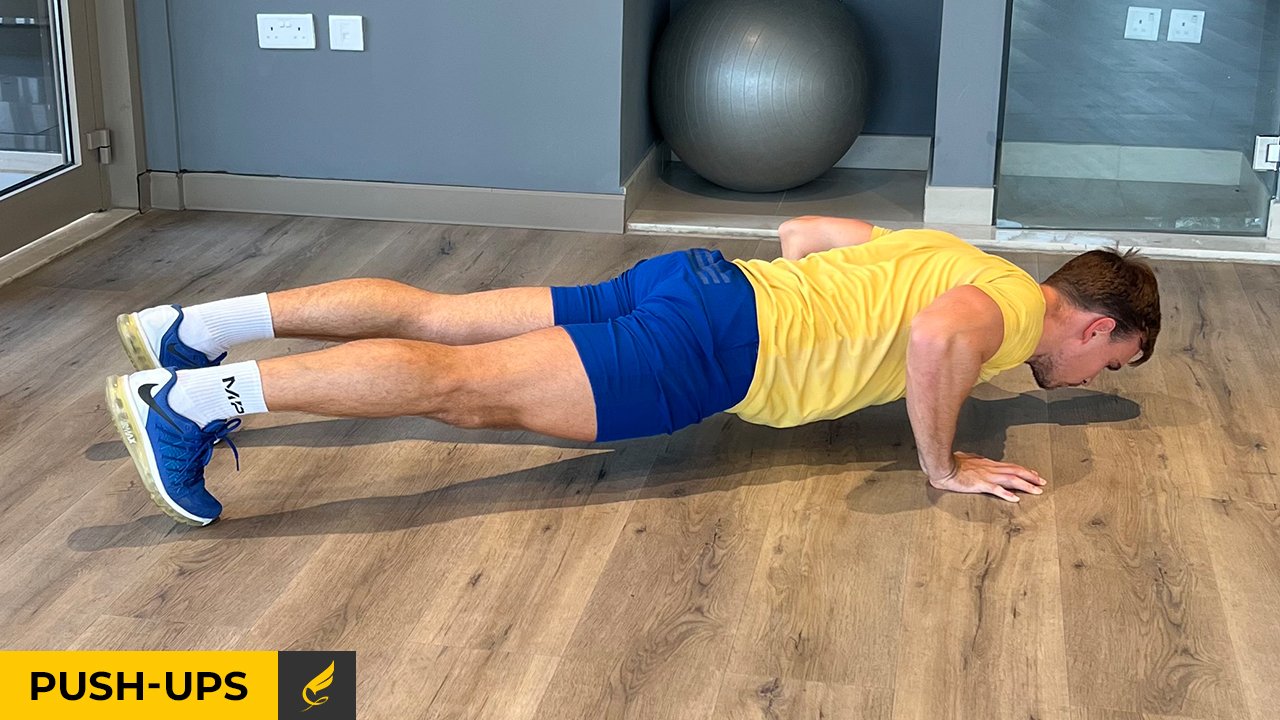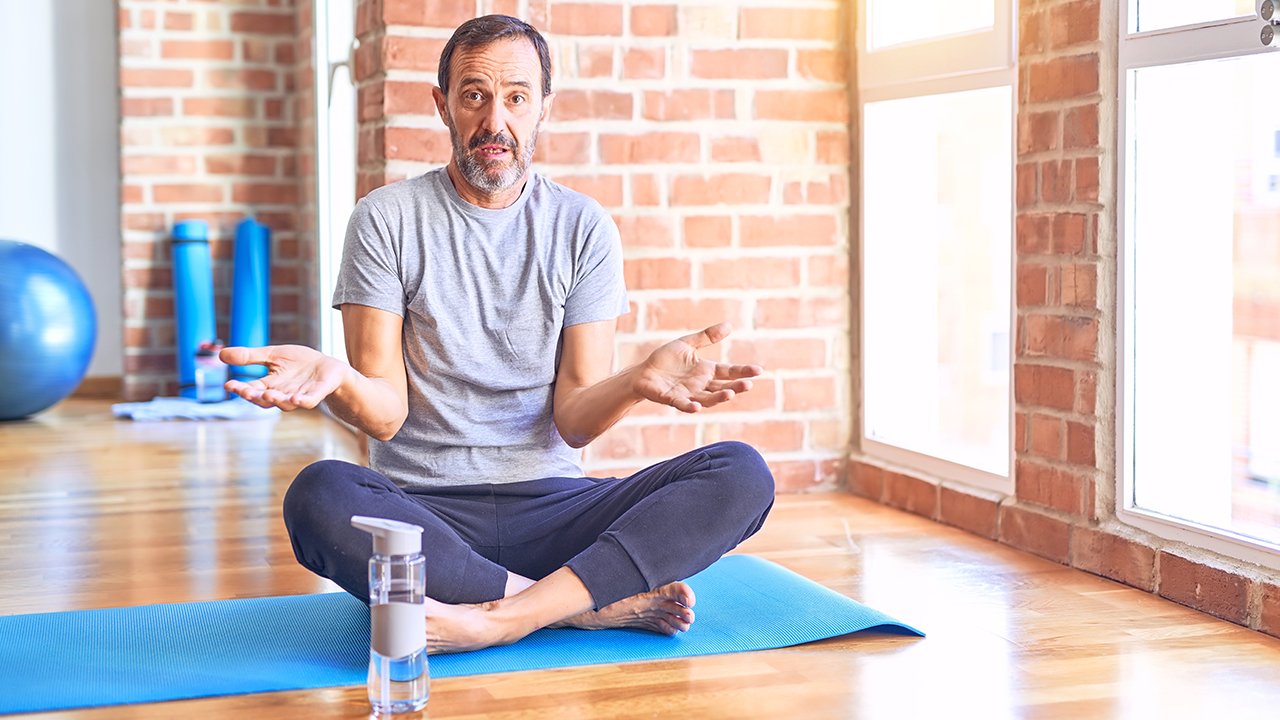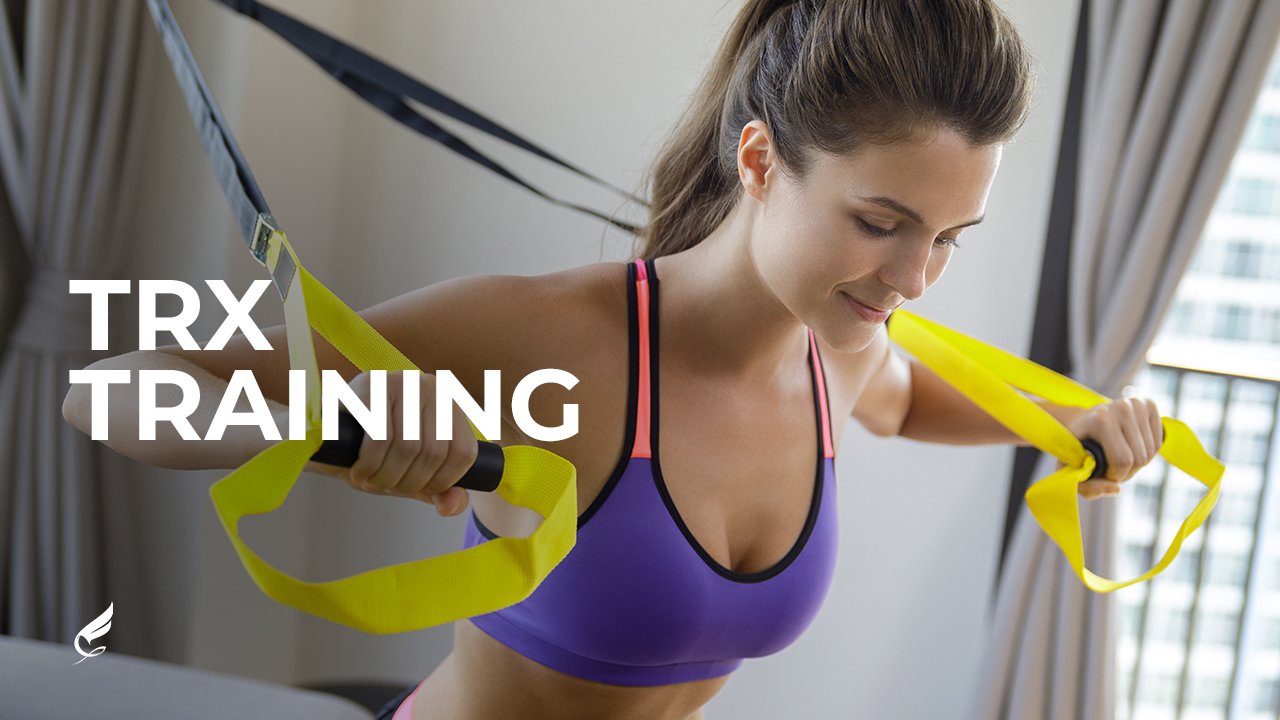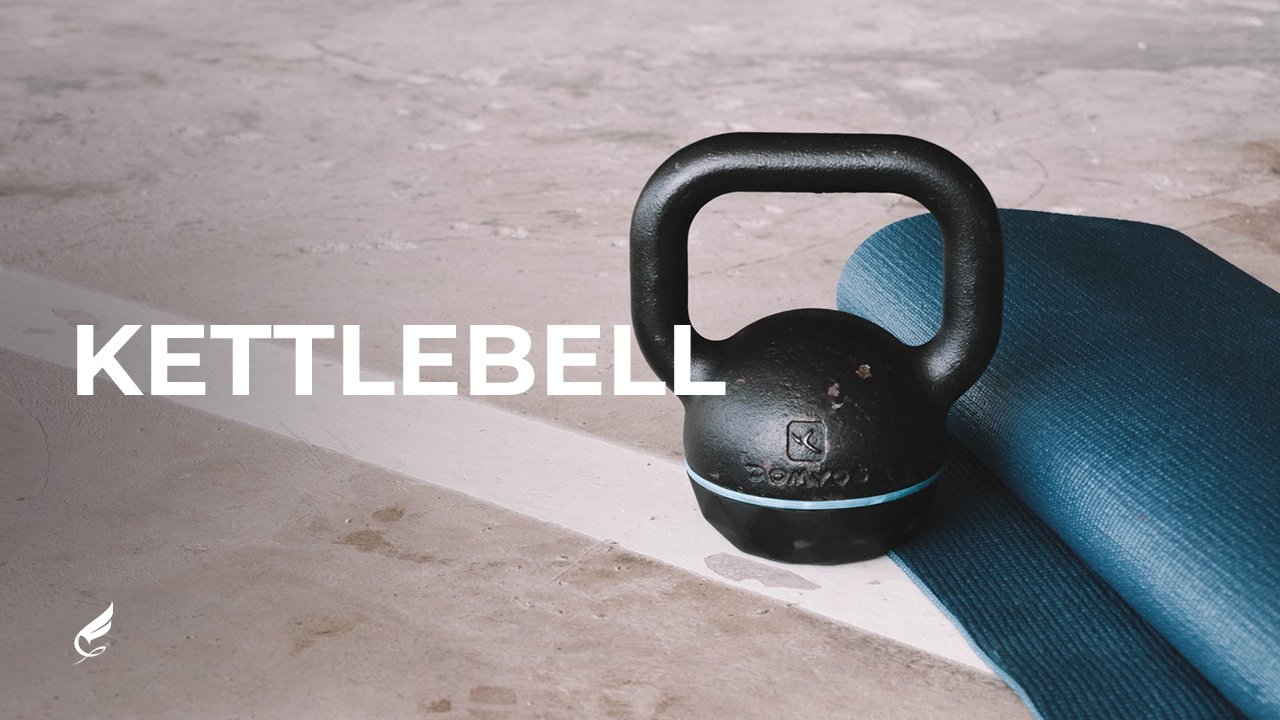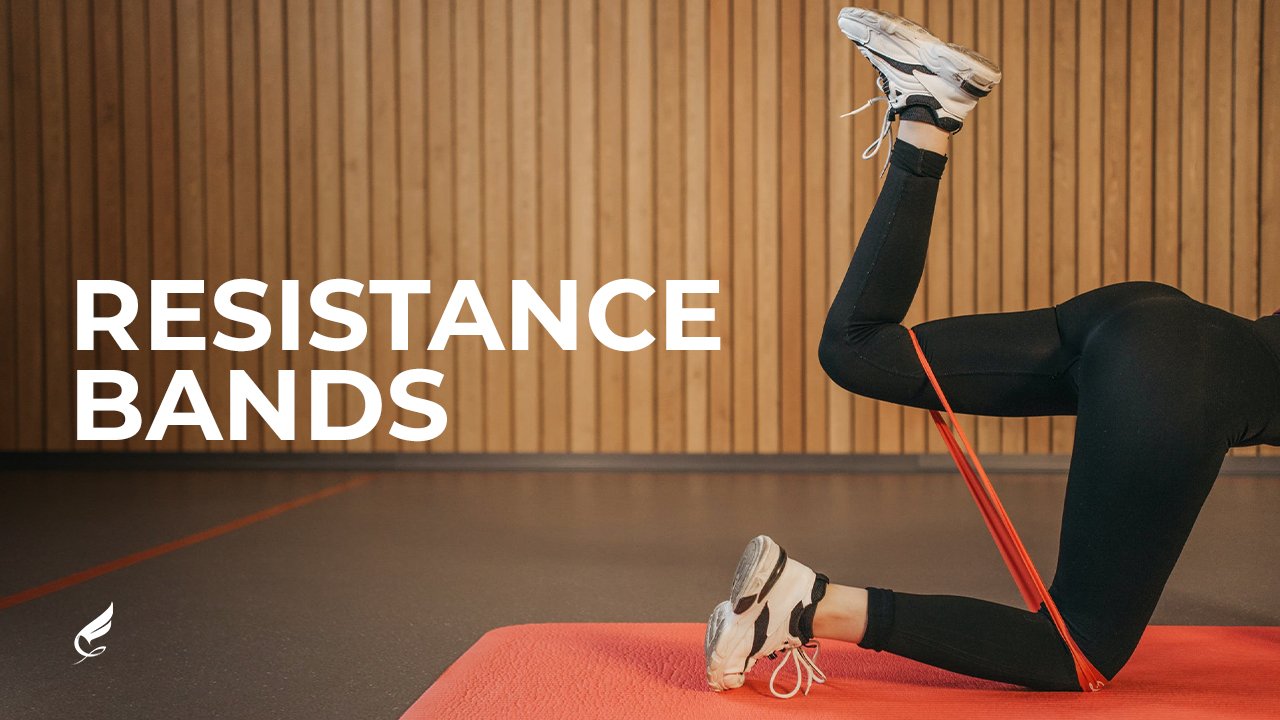Effective Home Workouts: Achieve Your Fitness Goals in Dubai
Can you achieve your fitness goals from the comfort of your own home? Absolutely! Home workouts offer convenience, flexibility, and cost savings, making them an attractive option for many people in Dubai. The key to success lies in consistency and understanding how to stimulate your muscles effectively. In this blog post, we'll explore the benefits of home workouts, share the top 10 beginner bodyweight exercises, and provide tips on incorporating equipment to enhance your training.
Home vs. Gym: Which is Right for Your Fitness Goals in Dubai?
Choosing the ideal workout environment—home or gym—can be tough. The answer depends on several factors, including your fitness level, goals, and personal preferences. Let's break it down to help you make the best choice for your fitness journey in Dubai.
Factors to Consider:
Training Experience: Beginners can see great results in either setting, so prioritize convenience and consistency.
Fitness Level: Gym equipment might offer more targeted muscle activation and variety as you progress.
Specific Goals:
Weight Loss: Both home and gym workouts can be effective. Choose the environment that motivates you most.
Toning: Bodyweight exercises at home can help, but gyms offer equipment for targeted muscle isolation and greater variety.
Muscle Building: Gyms provide equipment and progressive overload options for maximizing muscle growth.
Cardiovascular Health: Both environments work; choose based on your preference for outdoor activities or gym equipment.
Remember: Consistency is key! Unless you're an advanced trainee with specific needs, prioritize the environment that makes it easy to stick to your workout routine.
Need Help Deciding?
If you still need to decide which path is right, contact us at Fortius Dubai. We can help you assess your goals and create a personalized plan that fits your lifestyle and preferences, whether you train at home or in the gym.
Top 10 Bodyweight Exercises for Beginners: Kickstart Your Fitness Journey
Ready to embark on your fitness journey but feeling overwhelmed by the countless exercise options out there? We've got you covered! This curated list features 10 beginner-friendly bodyweight exercises perfect for anyone starting or restarting their fitness routine.
These exercises offer a full-body workout, targeting various muscle groups and improving strength, flexibility, and coordination. Combine them with a well-structured cardio program, and you'll be well on your way to achieving your fitness goals.
The Top 10:
Bear Walk
Bear Crawl
Staggered Squat
Side Lunge
Single-Leg Glute Bridge
Hamstring Walkouts
Push-ups
Pike Push-ups
Forearm Plank
Side Plank
1. Bear Walk: Activate and Mobilize
The Bear Walk, a versatile and dynamic warm-up exercise, empowers you to engage your entire body, promoting mobility and coordination. It's particularly beneficial for loosening up your calves, hamstrings, and glutes while also activating your core and upper body muscles.
How to Perform a Bear Walk:
Start on your hands and feet, with your hands shoulder-width apart and your feet hip-width apart.
Keep your back flat and your core engaged.
Lift your knees slightly off the ground, maintaining a tabletop position with your hips higher than your shoulders.
Move forward by simultaneously stepping your right and left foot forward, followed by your left and right foot.
Maintain a slow and controlled pace, keeping your core engaged and your back flat.
Progression:
As you become more comfortable with the movement, minimize the space between your hands and feet as you move forward.
Always keep your heels pressed towards the ground to engage your posterior chain.
Benefits:
Dynamically stretches your calves, hamstrings, and glutes.
Warms up your upper body, including your shoulders, chest, and core.
Improves coordination and stability.
Increases blood flow to your muscles, preparing them for your workout.
2. Bear Crawl: Enhance Mobility and Core Strength
The Bear Crawl is a fantastic exercise that not only warms up your entire body but also improves your mobility, coordination, and core strength. It's a valuable addition to any workout routine, especially for those seeking to move with ease and enhance their overall fitness.
How to Perform a Bear Crawl:
Start on your hands and knees, with your hands directly under your shoulders and your knees under your hips.
Lift your knees slightly off the ground, keeping your back flat and your core engaged. Imagine balancing a cup of coffee on your back – you don't want to spill it!
Move forward by simultaneously stepping your right and left foot forward, followed by your left and right foot.
Maintain a slow and controlled pace, focusing on keeping your core tight and avoiding any twisting or rotating in your torso.
Benefits:
Dynamically warms up your quads, core, and upper body muscles.
Improves coordination, balance, and stability.
Enhances core strength and endurance.
Increases blood flow to your muscles, preparing them for your workout.
Remember:
The Bear Crawl and Walk are excellent additions to your warm-up routine before engaging in more intense exercises.
3. Staggered Squat: Build Lower Body Strength and Balance
Training your lower body at home can be challenging, especially if you're new to exercise or have limited mobility. The staggered squat is a great starting point, offering a less intimidating alternative to traditional squats while still effectively working your glutes and quads.
How to Perform a Staggered Squat:
Starting Position:
Stand tall with your feet hip-width apart.
Step forward with one leg, creating a staggered stance with your front foot flat on the ground and your back heel lifted.
Place your hands on your hips or lightly hold onto a chair for needed support.
Movement:
Bend your front knee and push your hips back, lowering your body until your front thigh is parallel to the floor.
Keep your back straight, core engaged, and chest lifted.
Push through your front heel to return to the starting position.
Remember, most of your weight should be on your front leg.
Perform the movement slowly and with control to maximize muscle engagement.
Modifications and Progressions:
Beginner: If you find the staggered squat challenging, start with a chair-supported squat to build strength and confidence.
Advanced: Once you've mastered the staggered squat, challenge yourself with pistol squats (single-leg squats) for an advanced variation.
Benefits:
Strengthens your quads and glutes
Improves balance and stability
Enhances lower body mobility
Can be modified to suit different fitness levels
4. Side Lunge: Strengthen and Stretch
The side lunge is a fantastic lower-body exercise that targets your glutes and quads while providing a beneficial stretch for your inner thighs. It's a valuable addition to any home workout routine, helping you build strength, improve balance, and enhance flexibility.
How to Perform a Side Lunge:
Starting Position:
Stand tall with your feet hip-width apart, core engaged, and back straight.
Step out to the side with one leg, pointing your toes forward.
Movement:
Bend the knee of your leading leg and push your hips back, lowering your body until your thigh is parallel to the floor.
Keep your trailing leg straight, feeling a stretch in your inner thigh.
Ensure your leading knee tracks align with your toes, and avoid letting it collapse inward.
Push off your leading heel to return to the starting position.
Inhale before you start the lunge and exhale as you push back up.
Modifications:
Beginner: If you find the side lunge challenging, lightly hold onto a chair for support and balance.
Benefits:
Strengthens your quads and glutes
Improves balance and stability
Stretches your inner thighs
Can be modified to suit different fitness levels
5. Single-Leg Glute Bridge: Unleash Your Glute Power
Your glutes, often overlooked, are powerhouse muscles that play a crucial role in stability, power generation, and overall athletic performance. This underappreciated aspect of fitness is a game-changer, and neglecting to train them adequately can lead to missing out on significant benefits. Even those who incorporate glute exercises into their routine might struggle to find effective options for home workouts.
That's where the single-leg glute bridge shines. This exercise is a must-have for any home workout program, effectively targeting your glutes and hamstrings while challenging your core stability and balance.
How to Perform a Single-Leg Glute Bridge:
Lie on your back with your knees bent and feet flat on the floor, hip-width apart.
Extend one leg straight out before you, keeping your foot flexed.
Engage your core and glutes, then press your heel into the ground to lift your hips off the floor.
Keep your back straight, core engaged, and hips level. Avoid overextending your hips.
Hold the top position for a few seconds, squeezing your glutes.
Slowly lower your hips back to the starting position.
Repeat for 10-15 repetitions on each leg.
Coach's Tips:
Protect Your Back: Keep your abdominal muscles engaged throughout the exercise to avoid straining your lower back.
Focus on the Glutes: Concentrate on squeezing your glutes at the movement's top to maximize muscle activation.
Maintain Balance: Keep your hips level and avoid letting them drop to one side.
Chin Tuck: Keep your head up and chin tucked in when performing the exercise to prevent hyperextension and lower back discomfort.
Burnout Finisher or Warm-up Activator:
This versatile exercise can be used in two ways:
Warm-up: Perform 10-15 reps per leg before your lower body workout to activate your glutes and hamstrings.
Finisher: Do 5 rounds of 10-15 reps per leg with no rest between sets to challenge your muscles and leave them burning.
6. Hamstring Walkouts: Target Those Hard-to-Reach Muscles
Working your hamstrings at home can be challenging, especially with limited equipment. However, hamstring walkouts offer a fantastic solution, allowing you to target these often-neglected muscles using just your body weight.
How to Perform Hamstring Walkouts:
Starting Position:
Begin on your hands and knees, with your hands directly under your shoulders and knees under your hips.
Keep your knees slightly bent and feet flat on the floor.
Engage your core, extend your hips, and squeeze your glutes.
Press your elbows into the ground for stability.
Movement:
Keeping your core engaged and hips extended, slowly "walk" your feet forward, straightening your legs as much as possible.
Pause briefly at the point of full extension, feeling the stretch in your hamstrings.
Slowly walk your feet back to the starting position, keeping your knees slightly bent.
Variation: Hamstring Sliders
For an added challenge, try hamstring sliders on a smooth surface. Place a towel under your feet and perform the same movement, sliding your feet forward and back instead of walking.
Benefits:
Strengthens and stretches your hamstrings
Improves hip mobility and flexibility
Engages your core and glutes
Can be modified with sliders for an added challenge
7. Push-Ups: The Upper Body Powerhouse
Push-ups are a classic bodyweight exercise that builds strength and muscle in your chest, shoulders, and triceps. They're a fantastic addition to any home workout routine, helping you sculpt a toned upper body and improve overall functional fitness.
How to Perform a Push-Up:
Starting Position:
Begin in a plank position with your hands shoulder-width apart, fingers pointing forward.
Engage your core and glutes, creating a straight line from your head to your heels.
Ensure your lower back is neutral, not arched or rounded.
Movement:
Lower your body towards the floor by bending your elbows.
Keep your core engaged and back flat throughout the movement.
Push back up to the starting position, extending your arms fully.
Modifications:
Beginner: Start with knee push-ups if a full push-up is challenging. Place your knees on the floor and maintain the exact body alignment from your head to your knees.
Benefits:
Builds upper body strength and muscle mass
Improves core stability and posture
Can be modified to suit different fitness levels
8. Pike Push-Ups: Sculpt Strong Shoulders at Home
The pike push-up is a challenging yet rewarding bodyweight exercise that primarily targets your shoulders while also engaging your triceps and core. It's a fantastic way to build upper body strength and improve shoulder stability, even without gym equipment.
How to Perform a Pike Push-Up:
Starting Position:
Begin in a downward dog position, with your hands shoulder-width apart and your feet hip-width apart.
Form an inverted V shape with your body, keeping your hips high and your head close to the ground.
Your arms should be straight, and your knees can be slightly bent depending on your flexibility.
Movement:
Slowly lower your head towards the floor by bending your elbows.
Keep your core engaged and your back flat throughout the movement.
Push back up to the starting position, extending your arms fully.
Inhale as you lower down and exhale as you push back up.
Modifications and Progressions:
Beginner: If you're new to pike push-ups, start with incline pike push-ups by placing your hands on an elevated surface like a bench or a sturdy chair.
Advanced: To increase the challenge, elevate your feet on a stool, chair, or even your sofa. The closer your feet are to your hands, the more complex the exercise becomes.
Benefits:
Builds shoulder strength and stability
Engages your triceps and core
Improves upper body strength and control
Can be modified to suit different fitness levels
9. Forearm Plank: Core Strength and Stability
The forearm plank is a fantastic exercise for strengthening your core muscles, including your abs and lower back. A strong core is essential for maintaining good posture, preventing back pain, and improving overall functional fitness.
How to Perform a Forearm Plank:
Start in a push-up position, then lower your forearms to the ground, ensuring your elbows are directly beneath your shoulders.
Keep your body straight from head to heels, engaging your core and glutes.
Tuck your tummy in slightly and avoid arching or rounding your back.
Press your forearms into the ground and maintain tension throughout your body.
Coach's Tip:
Focus on Quality, Not Quantity: Instead of holding the plank for as long as possible, focus on maintaining proper form and engaging all your muscles. Aim for shorter holds with maximum muscle activation.
Benefits:
Strengthens your core muscles, including your abs and lower back
Improves posture and stability
Enhances overall functional fitness
Remember:
If you're new to planks, start with shorter holds and gradually increase the duration as you get stronger.
If you experience any pain or discomfort, stop the exercise and consult with a healthcare professional or a qualified fitness expert.
10. Side Plank: Engage Your Obliques and Build Core Stability
The side plank is a challenging yet rewarding core exercise that targets your obliques, transverse abdominis, and shoulders. It's a fantastic way to improve core stability, balance, and overall strength, which can enhance your performance in other exercises and daily activities.
How to Perform a Side Plank:
Start by lying on your side with your forearm flat on the ground and elbow directly under your shoulder.
Stack your feet on top of each other or stagger them for better balance.
Engage your core and lift your hips off the ground, creating a straight line from your head to your feet.
Keep your top arm towards the ceiling or rest it on your hip.
Hold this position for as long as you maintain proper form.
Switch sides and repeat.
Coach's Tips:
Hip Alignment: If performing the side plank on your right side, slightly rotate your hips forward so that your left hip is slightly in front of your right hip.
Leg Position: Stack your left leg on top of your right leg or stagger them for better balance.
Switch Sides: When changing sides, remember to switch the position of your legs as well.
Benefits:
Strengthens your obliques, transverse abdominis, and shoulders
Improves core stability and balance
Enhances overall strength and functional fitness
Remember:
If you're new to side planks, start with shorter holds and gradually increase the duration as you get stronger.
If you experience any pain or discomfort, stop the exercise and consult with a healthcare professional or a qualified fitness expert.
3. Beyond Bodyweight: Expanding Your Home Workout Routine
These ten bodyweight exercises are just the beginning! You can incorporate countless other exercises into your home workouts to challenge yourself and achieve your fitness goals. Consider combining these exercises with steady-state cardio for a few weeks, then gradually introduce high-intensity interval training (HIIT) as your fitness improves.
Steady-State Cardio: The Foundation for Endurance and Fat Loss
Steady-state cardio involves performing an activity at a moderate intensity for an extended period. It's an excellent way to improve your cardiovascular health, boost endurance, and promote fat loss.
Think of activities like walking, jogging, cycling, swimming, or even skipping rope – anything that keeps you moving comfortably without pushing you to your limits. The key is to maintain a steady effort where you can comfortably breathe and converse while exercising.
The Role of Lactate:
Previously, it was believed that the burning sensation and muscle fatigue experienced during high-intensity exercise were caused by lactic acid buildup. However, recent research suggests that lactate, a related compound, actually plays a beneficial role in energy production during exercise. While lactate levels do increase during intense activity, it's not the primary cause of muscle fatigue.
Building Your Cardio Foundation:
Aim for at least 30 minutes of steady-state cardio three times per week. As your fitness improves, gradually increase the duration to 50-60 minutes or more. This will strengthen your heart and lungs, improve your endurance, and prime your body for more intense workouts like HIIT.
What is High-Intensity Interval Training (HIIT)?
High-Intensity Interval Training (HIIT) is a workout strategy alternating between short bursts of intense exercise and brief recovery periods. This approach pushes your body to its limits, leading to improved cardiovascular fitness, increased calorie burning, and enhanced athletic performance.
During HIIT, you'll experience lactate buildup, a natural byproduct of intense exercise. While lactate was once mistakenly believed to cause muscle soreness, it is beneficial in energy production. The accumulation of lactate can lead to that familiar burning sensation and muscle fatigue, making it challenging to sustain high-intensity efforts for extended periods.
HIIT Workout Ideas:
You can incorporate HIIT into various activities, including:
Cycling
Treadmill running
Elliptical training
Sprinting
Bodyweight exercises
Sample HIIT Workout:
Start with 4 rounds of 1-minute high-intensity exercise and 2 minutes of rest.
Gradually progress by adding more rounds or reducing rest periods as your fitness improves.
If you want to maximize your results with a personalized fitness plan that includes HIIT, consider our Body Transformation Program at Fortius Dubai. With their wealth of knowledge and experience, our expert trainers will design a customized program tailored to your goals and fitness level, incorporating HIIT and other effective training methods to help you achieve optimal results. You'll feel supported and guided every step of the way.
The Importance of Stretching: Enhance Your Workouts and Prevent Injuries
Stretching is often overlooked, but it's a crucial component of any fitness routine. It helps prepare your body for exercise, improves flexibility, and reduces the risk of injuries.
Warm-up with Dynamic Stretching:
Before diving into your workout, dedicate 5 minutes to dynamic stretching. This involves moving your muscles through their full range of motion, such as arm circles, leg swings, or torso twists. Dynamic stretches increase blood flow, loosen up your joints, and prime your muscles for action.
Cool Down with Static Stretching:
After your workout, while your muscles are still warm, incorporate static stretches. These involve holding a position for an extended period, typically 20-30 seconds. Static stretches help improve flexibility, reduce muscle tension, and promote relaxation.
4. Top 5 Tools to Enhance Your Home Workouts
Adding simple tools to your home workout setup can significantly elevate your training experience and help you achieve your fitness goals faster. Here are two must-have options:
1. TRX Suspension Trainer: Your Portable Gym
A TRX suspension trainer is a versatile and portable piece of equipment that leverages your body weight to provide a challenging and effective workout. It can be easily anchored to a door, tree, or any sturdy structure, allowing you to perform various exercises that target your entire body.
Benefits of TRX Training:
Full-Body Workout: TRX exercises engage multiple muscle groups simultaneously, promoting strength, stability, and coordination.
Adjustable Intensity: You can easily modify the difficulty of each exercise by adjusting your body position and angle.
Portable and Convenient: The TRX is lightweight and compact, perfect for home workouts or travel.
Affordable: A TRX is a cost-effective way to enhance your training compared to investing in a complete home gym setup.
2. Jump Rope: Cardio Made Fun
Jumping rope is a classic cardio exercise that delivers a powerful punch. It's a fantastic way to improve cardiovascular health, burn calories, and boost agility and coordination.
Benefits of Jumping Rope:
High-Intensity Cardio: Jumping rope elevates your heart rate quickly, making it an efficient way to torch calories and improve your fitness.
Full-Body Engagement: It engages your entire body, including your legs, core, shoulders, and arms.
Improved Coordination and Footwork: Jumping rope requires rhythm and timing, helping you develop better coordination and agility.
Portable and Affordable: A jump rope is a compact and inexpensive piece of equipment that you can use anywhere.
3. Adjustable Dumbbells: Your Versatile Home Gym Companion
Dumbbells are a must-have for any home workout enthusiast. Their versatility allows you to perform various exercises, targeting every major muscle group in your body. From classic bicep curls and tricep extensions to lunges, squats, and rows, dumbbells offer endless possibilities for building strength, improving muscle tone, and enhancing overall fitness.
Benefits of Adjustable Dumbbells:
Space-saving: Adjustable dumbbells save valuable space in your home gym by replacing multiple fixed-weight dumbbells.
Progressive Overload: Easily adjust the weight as you get stronger, ensuring continuous progress and muscle growth.
Cost-Effective: Investing in a single set of adjustable dumbbells is more affordable than buying multiple fixed-weight sets.
Versatility: Perform various exercises to target different muscle groups and achieve your fitness goals.
4. Kettlebell: The Dynamic Strength Builder
The kettlebell, with its unique shape and off-center weight distribution, offers a dynamic and challenging workout experience. It's a fantastic tool for building strength, power, and cardiovascular fitness, all while engaging your core and improving coordination.
Benefits of Kettlebell Training:
Functional Fitness: Kettlebell exercises mimic real-life movements, enhancing your strength and power for everyday activities.
Full-Body Engagement: Many kettlebell exercises work multiple muscle groups simultaneously, providing an efficient and effective workout.
Cardiovascular Benefits: Kettlebell swings and other dynamic exercises can elevate your heart rate and improve your cardiovascular fitness.
Improved Coordination and Balance: The off-center weight of the kettlebell challenges your balance and coordination, leading to improved overall athleticism.
Inspiration:
Check out this 40 Most Effective Kettlebell Exercises video for workout ideas and inspiration.
5. Resistance Bands: Your Portable Strength-Training Companion
Resistance bands are a versatile and affordable tool that can add a new dimension to your home workouts. They provide varying resistance levels, making them suitable for all fitness levels. Whether you're a beginner or an experienced athlete, resistance bands can help you build muscle, improve strength, and enhance your overall fitness.
Benefits of Resistance Bands:
Versatility: Resistance bands can be used for various exercises, targeting all major muscle groups.
Portability: They're lightweight and compact, making them easy to store and travel with, perfect for home workouts or on-the-go fitness.
Progressive Overload: As you get stronger, you can easily increase the resistance by using thicker bands or combining multiple bands.
Joint-Friendly: Resistance bands provide a gentle form of resistance, making them suitable for people with injuries or joint pain.
Exercise Ideas:
Upper Body: Chest press, lat pulldown, seated row, bicep curls, tricep extensions.
Lower Body: Squats, lunges, hip thrusts, leg extensions, hamstring curls.
Core: Anti-rotation exercises, pallof press, standing wood chops.
Get Started:
Check out this upper-body resistance band workout you can complete in under 45 minutes.
5. Finding Your Perfect Home Workout: A Personalized Approach
There's no single "best" home workout; the ideal routine depends entirely on your individual needs and goals. To create a compelling and enjoyable plan, consider these key factors:
Your Goals: Are you aiming to lose weight, build muscle, improve endurance, or enhance overall fitness?
Your Fitness Level: Are you a beginner, intermediate, or advanced exerciser? Do you have any injuries or limitations?
Your Preferences: What types of activities do you enjoy? Do you prefer bodyweight exercises, cardio, or a combination?
Equipment Availability: What equipment do you have access to at home?
You can tailor your home workouts to your specific needs and preferences by answering these questions, maximizing your results and enjoyment.
6. Conclusion: Embrace the Power of Home Workouts
Home workouts offer a convenient and effective way to achieve your fitness goals. Choosing the right exercises, incorporating variety, and staying consistent can transform your body and improve your overall health and well-being.
Need Expert Guidance? Check Out Our Services:
Learn more about weight loss, body transformations, nutrition, and supplementation with one of the most comprehensive fitness blogs in Dubai:
#StayStrong #BeFortius

